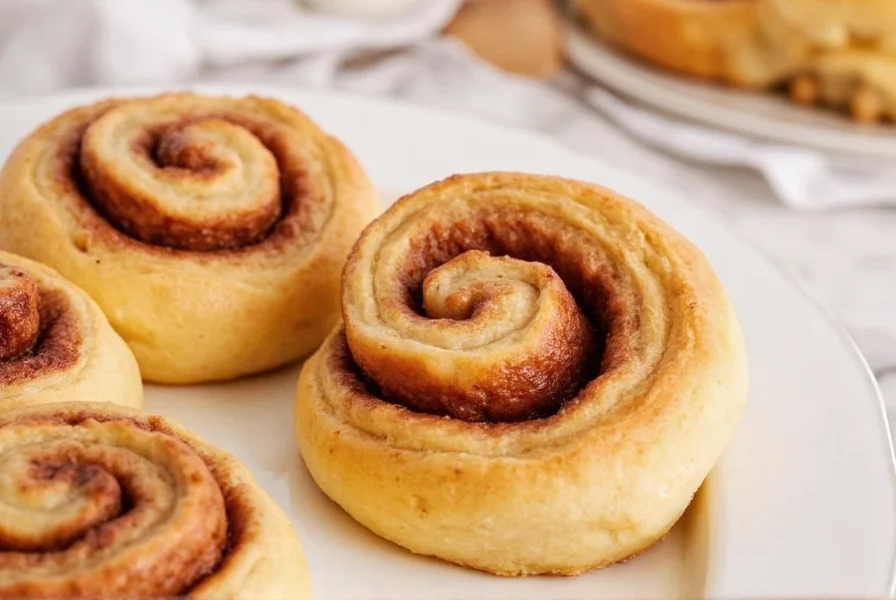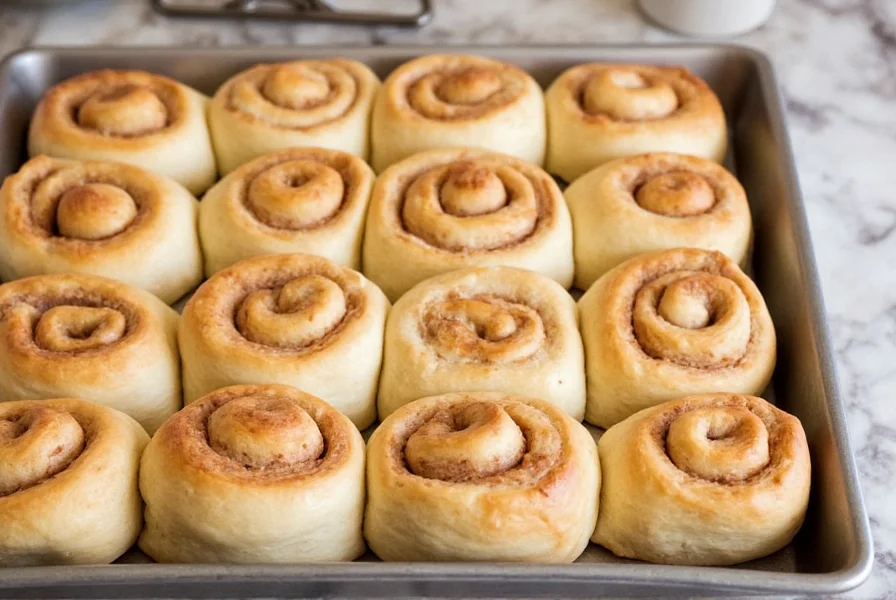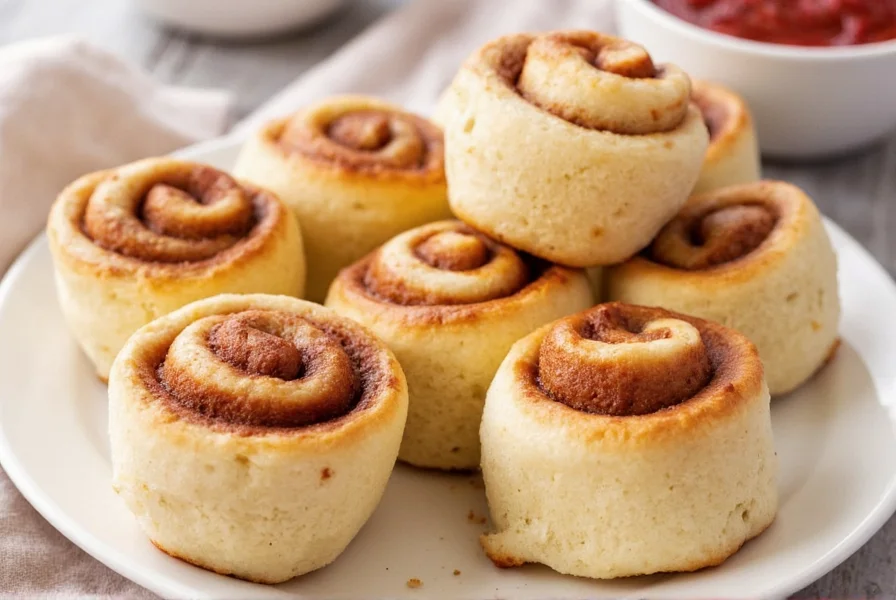Nothing compares to the aroma of freshly baked cinnamon rolls filling your kitchen on a weekend morning. These iconic spiral pastries, with their tender dough swirled with sweet cinnamon filling and draped in creamy frosting, represent the pinnacle of comfort baking. While store-bought versions exist, they lack the complex flavor and pillowy texture achievable only through careful homemade preparation. The difference lies in understanding the science behind yeast dough development and the precise balance of ingredients that creates that signature melt-in-your-mouth experience.
Essential Ingredients and Their Purpose
Creating exceptional homemade cinnamon rolls starts with understanding each component's role in the final product. Unlike many online recipes that simply list ingredients without explanation, knowing why each element matters helps you adapt and troubleshoot as needed.
| Ingredient | Function | Critical Temperature | Common Substitutions |
|---|---|---|---|
| All-purpose flour | Provides structure through gluten development | Room temperature (68-72°F) | Bread flour (adds chewiness) |
| Unsalted butter | Creates tenderness and rich flavor | Softened (65°F) | Vegetable shortening (less flavor) |
| Whole milk | Activates yeast and adds moisture | 105-115°F (warm) | Buttermilk (tangier flavor) |
| Active dry yeast | Rises the dough through fermentation | 105-115°F liquid | Instant yeast (use 25% less) |
Mastering the Dough: The Foundation of Perfect Cinnamon Rolls
The dough represents approximately 70% of your cinnamon rolls' success. Many home bakers fail by either under-kneading (resulting in dense rolls) or over-flouring (creating tough texture). For optimal homemade cinnamon rolls from scratch, follow these precise steps:
- Mix wet ingredients - Combine warm milk (105-115°F), melted butter, sugar, and yeast. Wait 5-10 minutes until foamy, confirming yeast activation
- Gradual flour incorporation - Add flour 1/2 cup at a time, stopping when the dough pulls away from the bowl sides but remains slightly sticky
- Kneading technique - Hand-knead for 8-10 minutes or machine-knead for 6-8 minutes until smooth and elastic (passing the "windowpane test")
- First rise - Place in greased bowl, cover, and let rise at 75-80°F for 60-90 minutes until doubled
Temperature control proves critical during the rising phase. Too cold (<70°F), and yeast becomes dormant; too warm (>85°F), and yeast dies. A consistent 78°F environment yields the most reliable results for your homemade cinnamon rolls without yeast issues.

Creating the Signature Cinnamon Filling
The filling separates adequate cinnamon rolls from extraordinary ones. Most recipes use excessive sugar that leaks during baking, creating burnt bottoms. Our tested ratio delivers maximum flavor without compromising structure:
- 1 cup packed light brown sugar (not white sugar)
- 3 tablespoons ground cinnamon (Ceylon preferred for complexity)
- 1/4 teaspoon fine sea salt (balances sweetness)
- 3 tablespoons softened butter (for even distribution)
Mix sugar, cinnamon, and salt thoroughly before cutting in the butter. This creates a crumbly paste that adheres to the rolled dough without pooling. When spreading, leave a 1/2-inch border along the far edge to prevent leakage during rolling—a common mistake in many easy homemade cinnamon rolls recipes.
Rolling and Cutting Technique
After spreading the filling, tightly roll the dough from the long side, pinching the seam to seal. Use unflavored dental floss or a serrated knife for clean cuts:
- Chill rolled log for 15 minutes to firm the butter
- Use dental floss: slide under log, cross ends, and pull upward for clean separation
- Cut into 12 equal portions (approximately 1.5 inches each)
- Place in greased 9x13 inch pan with space between rolls
Proper spacing allows rolls to expand without merging. Crowded rolls create dense centers—a frequent issue when troubleshooting homemade cinnamon rolls.
Baking and Frosting Perfection
Preheat your oven to 350°F with rack in the center position. Bake for 18-22 minutes until golden brown and internal temperature reaches 190°F. Overbaking creates dry rolls, while underbaking yields doughy centers.
For the ideal cream cheese frosting, combine:
- 4 ounces full-fat cream cheese (room temperature)
- 1/4 cup unsalted butter (room temperature)
- 1 cup powdered sugar
- 1/2 teaspoon vanilla extract
- Pinch of salt
Beat until smooth, then spread immediately on warm (not hot) rolls. The residual heat helps the frosting melt into the crevices without disappearing into the pan.

Troubleshooting Common Problems
Even experienced bakers encounter issues with homemade cinnamon rolls. Here's how to address frequent challenges:
- Dense texture - Usually caused by over-flouring or under-proofing. Measure flour by spooning into cup and leveling (never scoop), and ensure proper rising environment
- Filling leakage - Results from too much butter in filling or insufficient border when rolling. Chill dough before cutting and maintain the 1/2-inch border
- Yeast failure - Milk temperature exceeding 120°F kills yeast. Always test with thermometer
- Dry rolls - Overbaking or insufficient fat content. Set timer for 18 minutes and check internal temperature
Variations for Different Dietary Needs
Traditional cinnamon rolls can adapt to various dietary requirements without sacrificing quality:
- Gluten-free - Use 1:1 gluten-free flour blend with xanthan gum; add 1 extra egg yolk for structure
- Vegan - Substitute butter with coconut oil, milk with almond milk, and use vegan cream cheese
- Lower sugar - Reduce filling sugar to 3/4 cup and use monk fruit sweetener in frosting
- Whole grain - Replace 1/3 of flour with whole wheat pastry flour for nuttier flavor
Storage and Reheating Methods
Homemade cinnamon rolls maintain freshness for 2 days at room temperature in an airtight container. For longer storage:
- Refrigerated - Up to 5 days; reheat in 30-second microwave intervals
- Frozen unbaked - After cutting, freeze rolls on baking sheet, then transfer to freezer bag. Bake from frozen, adding 5-8 minutes
- Reheating - For best texture, warm in 300°F oven for 8-10 minutes rather than microwaving











 浙公网安备
33010002000092号
浙公网安备
33010002000092号 浙B2-20120091-4
浙B2-20120091-4